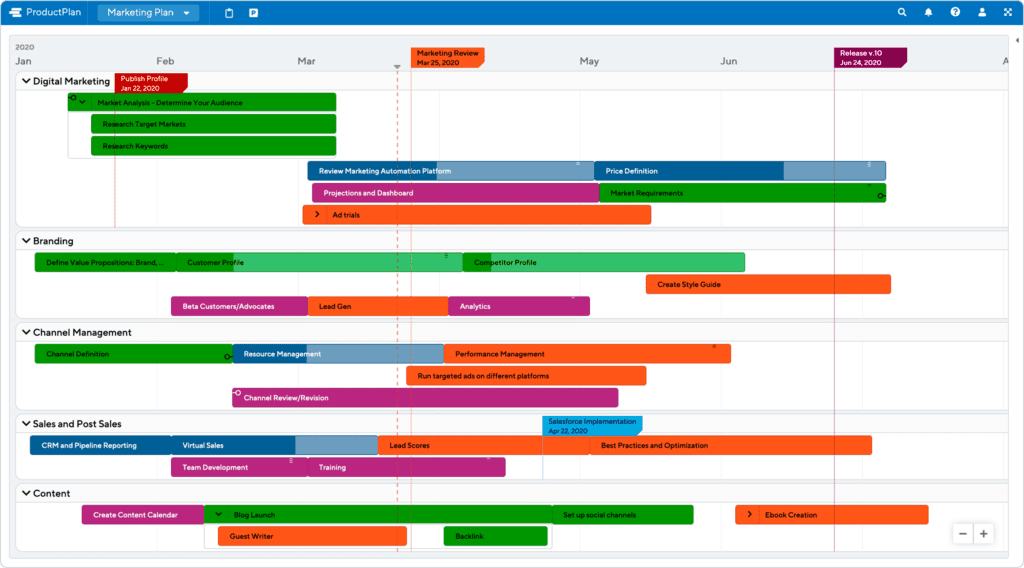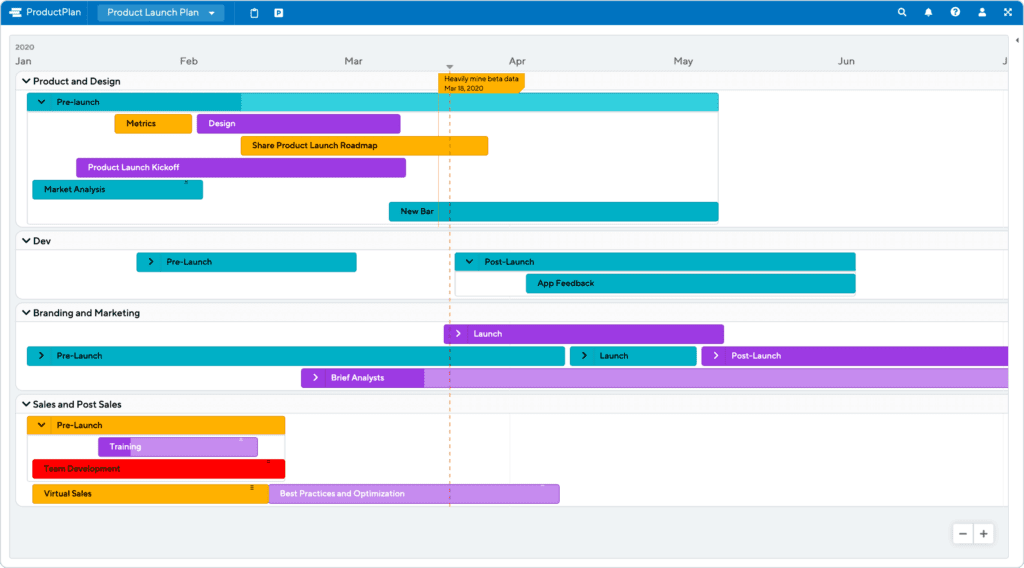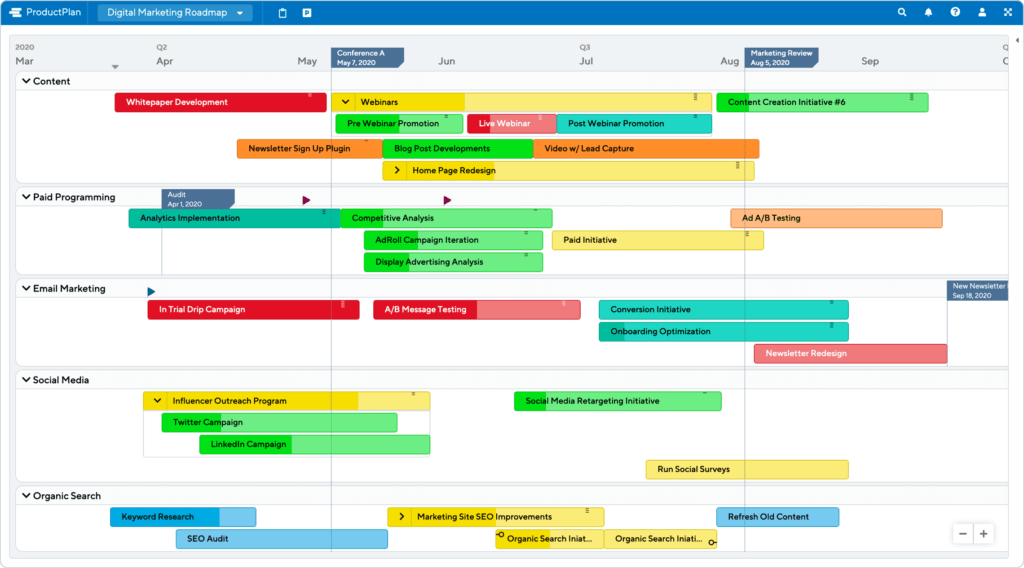How many times have you sat in a marketing meeting, listened as the discussion jumped randomly from topic to topic, and wondered, Can we take a step back? Can we first discuss how all of these details are related, and why we’re talking about them? Can we all get on the same page about what we’re here to accomplish?
Fortunately, there is a highly effective, easy-to-create tool that can help marketing professionals build these strategic answers into their marketing initiatives — before their team has to ask the questions. That tool is a marketing roadmap.
Every successful marketing initiative — from publishing a single piece of thought-leadership content to rolling out a complex ad campaign, to launching your company’s first product — must begin with a strategic vision and a clearly defined set of goals. Without an understanding of what you need to accomplish, and the ability to clearly communicate that strategic plan to your team, your initiative will have a lower chance of success.
This is why marketing roadmaps can be so valuable. First, they help marketing managers create a strategic framework for their initiatives, into which they can easily group and prioritize ideas, goals, tasks, and other details. Then, when they’ve built their roadmap — ideally using roadmap software that outputs an intuitive, visual document — they can use it to share their strategic vision with their teams and other stakeholders before everyone goes off to work on their respective tasks.
Additionally, having ongoing access to the marketing roadmap also means that the marketing manager and anyone on their team can take a step back anytime, and view the initiative from a 30,000-foot level. When working on an initiative with many moving parts, being able to see the whole project from this higher-level view can add real value in terms of keeping the whole team on track, and helping to adjust priorities when necessary.
Marketing roadmaps can cover initiatives that are large or small, simple or complex. Some examples include:
- Creating a social media strategy
- Companies event and conference participation
- Conversion rate optimization experiments
- Executing on a content-marketing editorial calendar
- Tracking the strategic marketing plan
- Launching a new product
- Managing the company’s digital media mix
Let’s take a look at the last three examples — a Marketing Plan, a Product Launch Plan, and a Digital Marketing Roadmap.
Marketing Plan

A marketing plan is a great way to capture all of your disparate marketing efforts at a strategic level and to take a very broad view of how these efforts relate to each other in terms of time, resources, and other factors.
In the example above, the marketing plan is broken into specific buckets — product and service management, branding and marketing, channel management, and sales and post-sales. Drilling into any of these buckets, or any of the specific categories under them, will provide a more granular view of specific tasks and other details. But this high-level view is a great way to quickly check on the plans’ progress and reassess priorities when necessary.
Using a visually oriented, easy-to-update marketing roadmap application like the one shown here, the marketing manager can quickly add new details anytime — for example, a new subcategory called “Affiliate Marketing Opportunities” under Channel Management.
This type of easily updated roadmap is particularly valuable for marketing efforts because marketing plans can change frequently. The easier it is to update your marketing roadmap, the more likely you will have a document that is always current.
Product Launch Plan

Launching a new product can be extremely complex, with a wide range of interrelated tasks, project interdependencies, and many moving parts.
A product launch plan can be invaluable in helping a marketing manager or product manager maintain a strategic overview of all launch efforts. These timeline-focused roadmaps help keep all of the relevant teams informed about what they need to contribute, and when, at each stage of the product launch.
In the example above, the roadmap provides a high-level overview of the marketing team’s product launch responsibilities — product and service management, branding and marketing, channel management, and sales and post-sales.
With this high-level view, a marketing manager will be able to quickly spot potential issues before they become irreversible problems.
Digital Marketing Roadmap

Another marketing initiative, one that requires a strategic overview and the ability to adjust quickly when necessary, is managing a company’s marketing mix.
For the digital component of the mix, in particular, a digital marketing roadmap can be a valuable asset to marketing managers.
In the example roadmap above, the company’s digital marketing mix is broken into several categories — content, paid/organic search, email marketing, and social media.
An initiative like managing the marketing mix is a great example of where a visual roadmap is very useful. This roadmap gives marketing managers a quick snapshot of all of the digital marketing categories the company is currently investing in, when these investments begin, where they will overlap, etc. The marketing manager can also easily update the mix anytime — for example, by simply dropping a new category, “Public Relations,” into the mix, or creating a “Case Studies” subcategory under Content.



